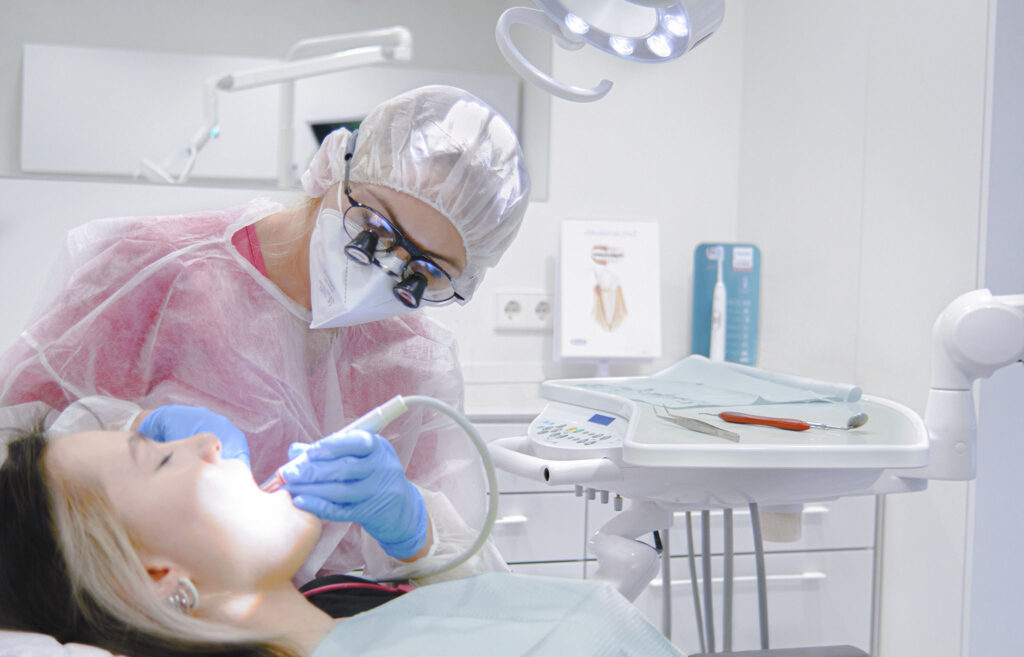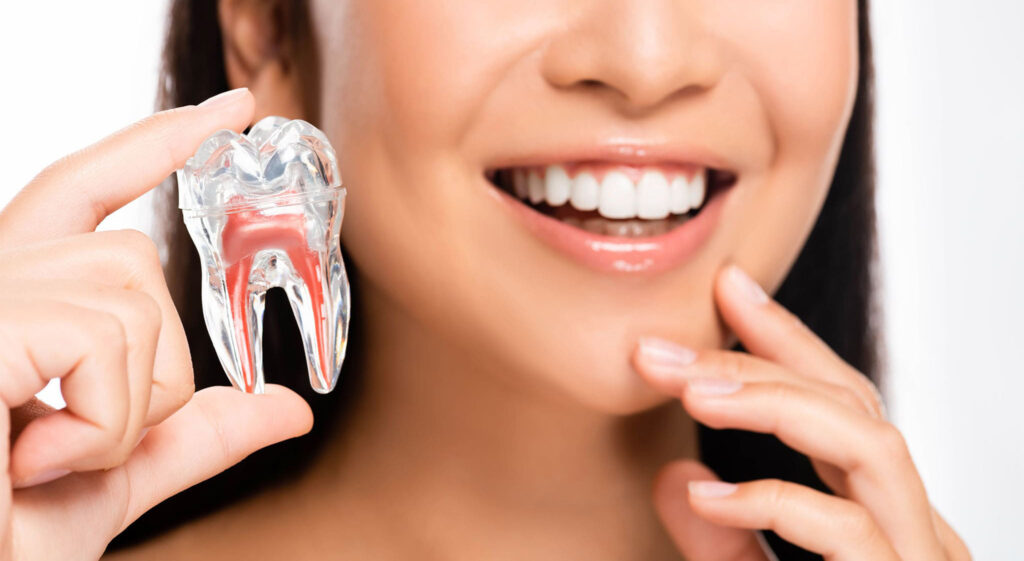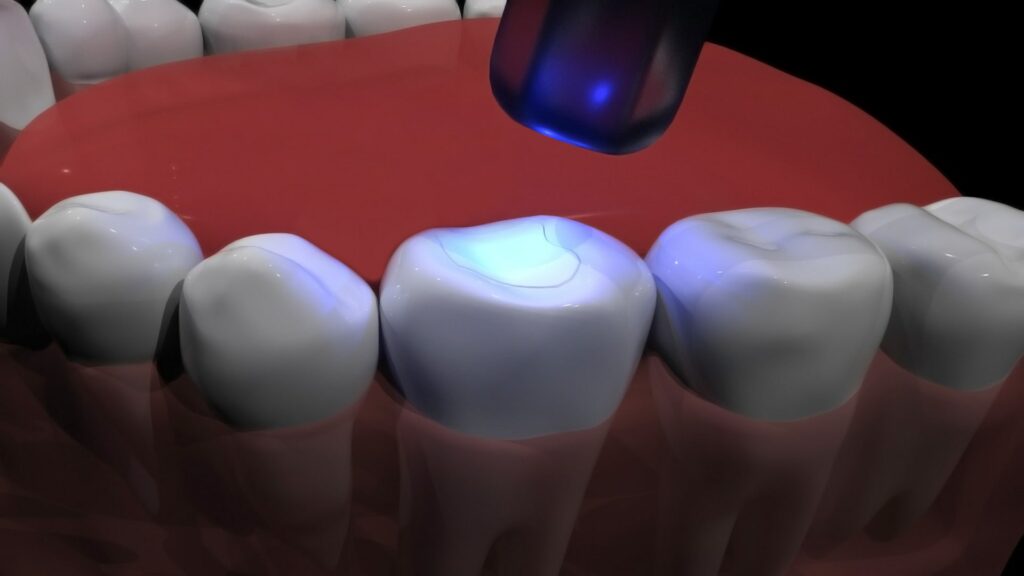
Dental injuries
Whether it be tripping while playing sports, or biting a crusty piece of bread, dental injuries often come out of nowhere. Many people believe that if it is just minor then they can ignore it, but that can actually lead to their small chip becoming a full break and even requiring extraction if the inner nerve of the tooth is damaged.
In our clinic, we treat many types of dental injuries and offer just as many effective treatment options. In this article we have outlined some of the more common dental traumas and their treatment methods.
Why do broken teeth require urgent treatment?

Many people believe that if they sustain a dental injury leading to a chipped or cracked tooth but it doesn’t hurt then they do not need to see their dentist. This is wrong, as a chipped or cracked tooth can become unstable and a small initial crack or chip can crack worse leading to a more severe dental injury. The sharp edges of the chip can even cause injury to the mucosa within the mouth, leading to cuts and ulcers within the mouth.
A minor dental injury can lead to minor complications such as sensitivity to factors such as hot/cold, sugary/sweet, acidic, and pressure. This is due to the enamel becoming damaged, allowing the underlying nerve to be exposed to the environment within the mouth. This exposure goes both ways however, as it also allows pathogenic bacteria to enter into the soft interior of the tooth known as the pulp. The pulp will become inflamed over time, leading to pulpitis. Additionally, specific pockets of bacteria can come together to form cysts within the mouth. These cysts become a haven for infection, and can eventually spread throughout the mouth and eventually they can spread the infection into the blood leading to life-threatening conditions.
The easiest way to avoid any of these complications is to book an evaluation with a dentist if you ever chip or damage your tooth, no matter the severity.
What to do in case of a dental injury?

There are a number of dental injuries which all require slightly different actions:
Bruised teeth
If you have ever fallen over you will know how a bruise will look and feel. Often caused by trauma, bruises form when the capillaries under the skin become damaged and burst leading to swelling, pain, and inflammation.
Bruising of the teeth is similar, with the tooth turning a darker colour and showing increased pain and sensitivity. Just like bruises on the skin, dental bruising often comes from trauma to the tooth. This trauma can come from biting your nails, bruxism (clenching), damage from hard foods such as candy or bone.
The key to avoiding serious dental problems is to see a dentist in case of any dental trauma. If the cause isn’t due to a comorbid condition, treatment is often just to rest the tooth by avoiding hard foods and chewing on the other side. Over the counter pain medication should help lessen the pain while the bruise heals. If the cause is another condition, then addressing that will likely reduce the bruising. Cold packs can also be used on the face to help with pain and swelling when a tooth is bruised.
Loose tooth
It’s normal for your teeth to move slightly. The muscle fibres that hold the teeth in place are slightly pliable and can have up to 1 mm of room to move which has a number of benefits. If your tooth is able to move more than 1 mm then you have irregular mobility and it is recommended you book a visit to your dentist.
Teeth can become loose for a number of reasons, with factors such as bruxism, diabetes, gum disease, build-up of plaque and tartar, as well as sudden injury or impact, all being potential causes.
Sometimes treating the underlying condition can allow the gums to heal and become stable, though sometimes the use of a splint will prevent the tooth from moving and allow more efficient healing. If the damage is too extensive however, or the tooth has been allowed to die, then the tooth will have to be removed and a dental prosthetic will be installed as a replacement.
Knocked-out tooth
A tooth can get knocked out due to a number of factors, such as sudden impact or pre-existing weakness due to other dental conditions.
If you find your tooth knocked-out then follow these steps:
- If the tooth is still in the mouth, avoid moving or traumatising it, and contact your dentist urgently.
- If a tooth has been knocked out, save it, do not rinse or scratch it. Hold the tooth by the crown, not the root. Soak the tooth in milk before visiting the dentist to prevent it from drying out and becoming damaged. Milk is preferable to water in this case as it has a more appropriate PH level and plain water can cause swelling and damage to the tooth cells. If milk is not available, you can keep it in a small amount of saliva or in the mouth between the cheek and the gums.
- It is recommended to apply a cold compress to the injured area and take painkillers.
You should then seek urgent dental help. If possible, the dentist will replant the knocked-out tooth after cleaning it. A splint will be used to hold the teeth against its neighbours, to anchor it in place while it heals. If the tooth cannot be replanted, a dental implant can be installed to restore the tooth.
Cracked enamel
Cracked enamel is permanent and unlike regular bone cannot be naturally repaired. Cracks can be difficult to spot yourself, and your dentist will likely find them during a routine dental check-up. Treatment for a small crack will likely involve cosmetic dental filling, where the crack is filled with a special material to fill and seal the crack, while also restoring the natural look of the teeth.
Crown fracture
There are two main types of crown fracture, uncomplicated and complicated (when the inner nerve of the tooth, the pulp, is revealed).
Uncomplicated fractures require a dental filling, which involves polishing the tooth and replacing the lost material with a dental filling.
In the case of complicated crown fractures, the exposed pulp presents a high risk of inflammation or contamination which increases complexity and severity. If treated within 24 hrs from first exposure, it is usually possible to restore the tooth without any major treatment being required on the pulp. If left too long, then the pulp will start to die and more complex endodontic treatment will be required before the tooth is reconstructed.
Root fracture
Root fractures are when the fracture extends to the lower part of the tooth known as the root. If the tooth is still connected to the gum, and not partially or fully dislocated, then it will be a more complicated recovery. One possible option in cases of root fracture is a root canal treatment, which allows internal access to the root.
Broken teeth restoration methods

First and foremost, if you receive any damage, be it a chip, crack, or break, it is extremely important to visit your dentist as soon as possible to have it checked out. Even a small fracture can become a chip, which given enough can become a full break.
When you see your dentist, once they have assessed the situation, they will propose the solution that will best fit your case.
The solution they choose may be one of the following:
- Dental Filling – Often used for cavities (caries), fillings can be used to fill-in cracks and other small injuries.
- Cosmetic dental filling – often used in the front teeth, or any that affect the smile, as it can be used to restore the tooth using a natural-coloured composite. This material can be shaped to look like a natural tooth and will be almost as hard.
- Dental crown prosthetic – If the crown (top) of the tooth gets damaged severely, it may need to be replaced entirely with a prosthetic. The damaged tooth will be shaved down, and a root canal treatment performed, if necessary, with the new crown being bonded to the top.
- Inlays/Onlays/Overlays – A variety of the crown prostheses that only replace part of the crown.
- Implants – A full artificial replacement of a missing tooth, several adjacent teeth (bridge), or an entire dental arch. Read more in section about implantation.
Treatment of teeth injuries in our clinic
Within our clinic we provide an extensive array of procedures that are personally chosen for your specific case. We perform both cosmetic treatments as well as those which are medically necessary. Our experienced dental surgeons are trained to treat your teeth in a way which maximises the aesthetic appeal of your smile, as well as maintaining the natural look.
When you come in for a prosthetic or implantation procedure, we will perform all the necessary procedures in-house in as few sessions as possible.
If you have any cracks, chips, breakages, or any other dental problems then do not hesitate in coming in for an appointment. It may save your smile!










